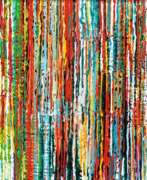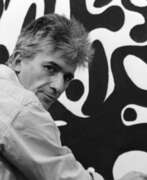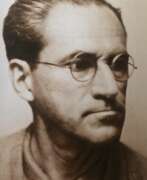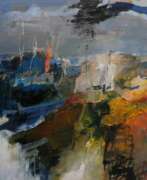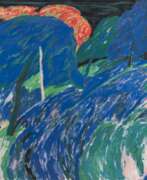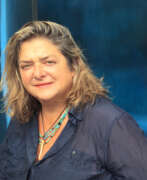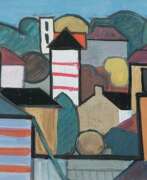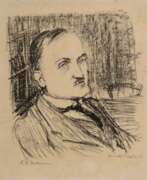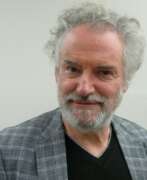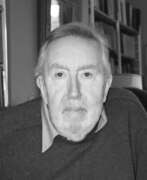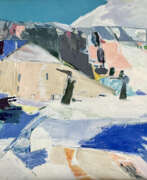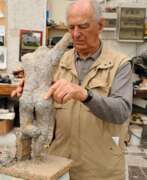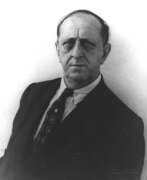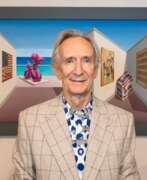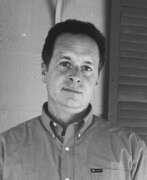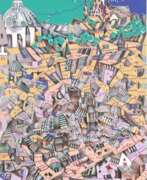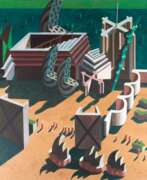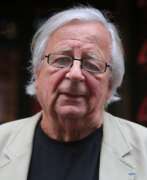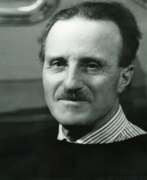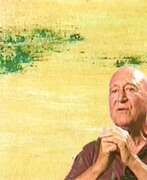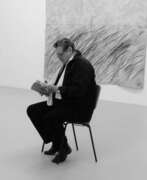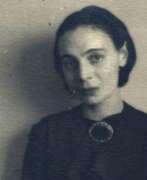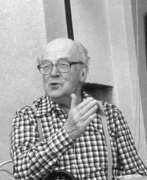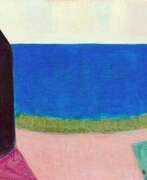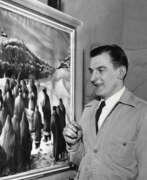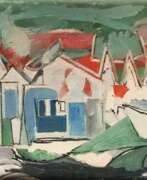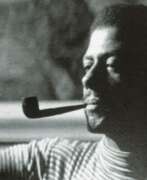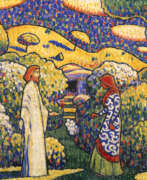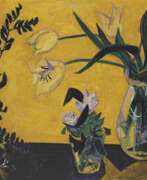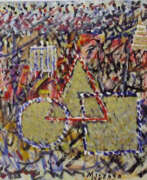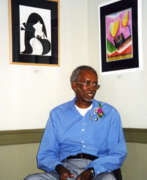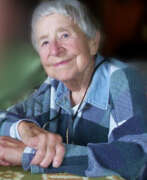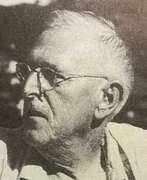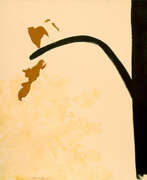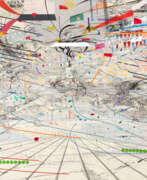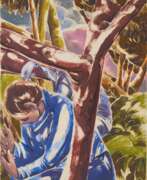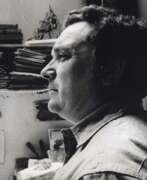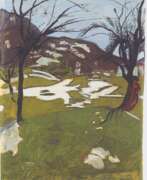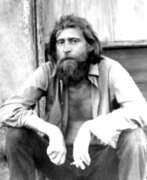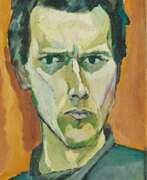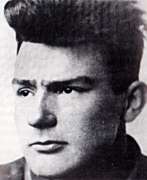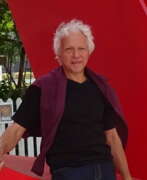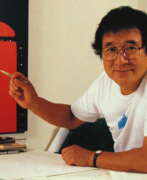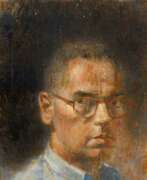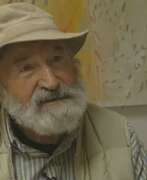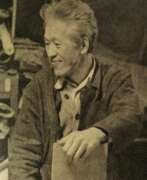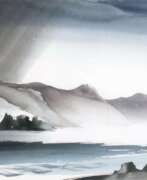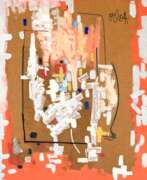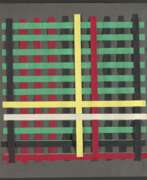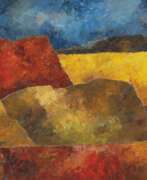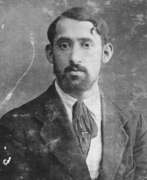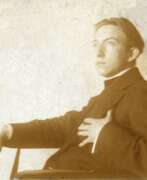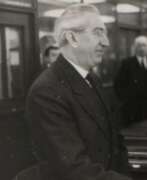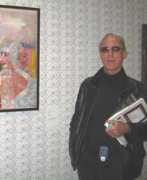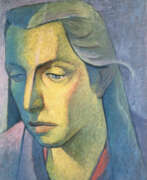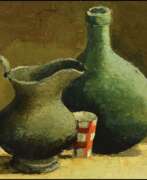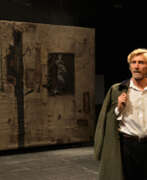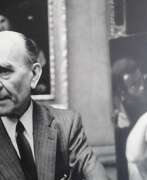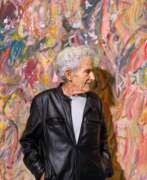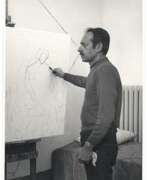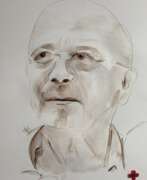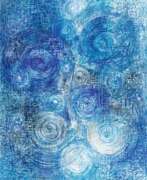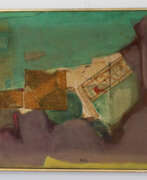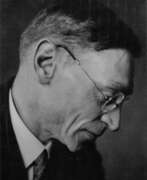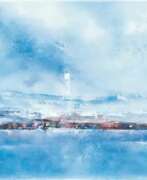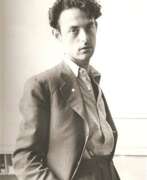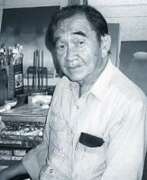Landscape painters Abstract art
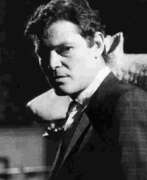

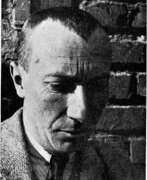

Jean Arp, born Hans Peter Wilhelm Arp, was a German and French poet, painter, graphic artist and sculptor. one of the founders of the Dada movement in Zurich.
Arp used abstract forms in his work and experimented with different materials such as wood, metal and stone. He was also known for his poetic works, in which he applied a method of randomly selecting words, called the "clutter method". Arp believed that this method helped him express his thoughts more precisely and originally. Arp's influence on the arts is still significant today.
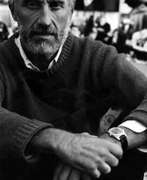

Ugo Attardi was an Italian painter, sculptor and writer. Attardi moved from Genoa to Rome in the early 1950s, where he formed the group Forma 1 together with other artists. His sculpture of Ulysses is now permanently installed in Battery Park in New York
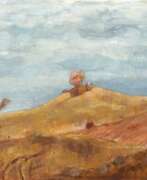

Siegfried Berndt, born 1880 in Germany and passing away in 1946, was a distinguished painter and printmaker whose artistic contributions are often overlooked in art history. After studying at the Dresden Art Academy, Berndt received a travel scholarship that profoundly influenced his art, taking him to cities like Paris, Brussels, Antwerp, London, and Scotland. These travels exposed him to diverse artistic movements, enriching his work with elements of Impressionism, Expressionism, and New Objectivity.
Berndt was especially skilled in the traditional Japanese woodblock printmaking technique, which he employed to explore various artistic styles. This unique approach resulted in color woodcuts with a distinct personality, appealing to a wide range of collectors. His woodblock prints are particularly noted for their innovative use of this traditional technique, blending it with Western artistic movements.
Despite the challenges posed by the two World Wars, Berndt's work found its way into public collections and was recognized for its artistic merit. However, much of his pictorial work was lost due to the turmoil of war. Some of his expressive pastel works, often repeated with small variations, as well as oil paintings, have been documented.
Berndt's art remains relevant for collectors, auctioneers, and experts in art and antiques, particularly for those interested in the intersection of Eastern and Western printmaking techniques. His work, although not as widely known, represents a unique blend of styles and techniques that contribute to the rich tapestry of early 20th-century art.
For enthusiasts interested in staying updated about sales and auction events related to Siegfried Berndt's work, subscribing to updates would be beneficial. This ensures access to the latest information about new sales and auction events related to his art.
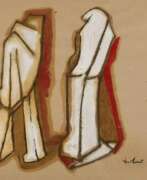

Otmar Blaser is a contemporary German artist. In 1967 he studied at the Werkkunstschule with Prof. Holweck. In 1968 he traveled through Europe, the Middle East, Canada and America. From 1970-1976 he studied at the University of the Arts in Berlin. In 1975 he was a master's student with Professor Bachmann, in 1976 he was an assistant to Professor Kapitsky at the Institute of Visual Communication and Design. In 1977 he was a lecturer at the Volkshochschule Berlin-Neukölln, collaborating freelance with the Theatertreffen Berlin.


Alfredo Chighine was an Italian painter and sculptor of the Informel movement.
His art has evolved from early scribbled lines to vivid and lively precision paintings. In recent years Chighine has achieved his main goal: brightness, surface texture and flowing lines.


Prunella Clough was a prominent British artist. She is known mostly for her paintings, though she also made prints and created assemblages of collected objects. She was awarded the Jerwood Prize for painting, and received a retrospective exhibition at Tate Britain.


William Congdon is an American artist known for his strong and deeply personal paintings exploring themes of spirituality, existentialism and the human condition.
William Congdon's early work was influenced by Expressionism and the post-war abstract art movement. Over time, however, his artistic style evolved, and he developed a unique approach combining abstraction with representational elements. His paintings often depicted isolated figures, cityscapes and landscapes, conveying a sense of introspection and emotional depth.
Congdon's works are characterised by a rich colour palette, dramatic brushwork and a sense of raw emotion. He explored the contrast between light and darkness, creating compositions that were both contemplative and expressive.
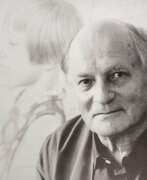

Rudolf Dischinger is a German artist, representative of the “new materiality” movement. Studied at the State School of Art in Karlsruhe (Baden). He took part in the exhibition “Newest Ways of Painting and Drawing” in Leipzig. He taught at the women's real school in Freiburg. With the outbreak of World War II, he was sent to the front as a soldier. He fought in France and the USSR. After being wounded in 1942, he returned to his homeland. He taught at the State Academy of Arts in Freiburg. After the abolition of the academy, he taught at the Goethe Gymnasium there. Awarded the Reinhold Schneider Prize from the city of Freiburg. Until the beginning of World War II (1939), he painted mainly city landscapes and still lifes in the style of “new materiality.” After 1945 he turned to abstract art. In the last years of his life he again worked in object painting.
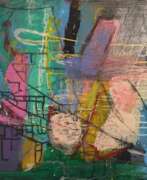

Victor Isaakovich Gershman (Russian: Виктор Исаакович Гершман) was a Soviet and Russian artist of the twentieth and twenty-first centuries. He is known as a painter and nonconformist graphic artist.
Victor Gershman began his artistic career early - already at the age of 14 his drawings were exhibited at the International Exhibition of Children's Drawings. He participated in the Second World War, after demobilization and graduation from the Institute he worked at textile mills, but also devoted time to creativity. He traveled a lot, painting landscapes, architecture, still lifes. The artist mastered various techniques - watercolor, ink, pencil, oil, collage. In the 1960s and 1970s he became interested in non-traditional and abstract painting.
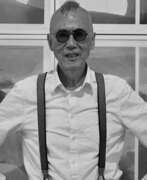

Han Hsiang-ning is a Taiwanese-American artist. Han has participated in many prominent museum exhibitions. He often uses spray painting and paints photo-realistic street scenes. In 1961, he joined the "Fifth Moon Group". He began abstract form oil painting, and his works first appeared in the magazine Pen Review. In 1963 he began working with roller and stencils on rice paper, still abstract, emphasizing form and space structure. In 1969 he began spray painting works using acrylic paint on canvas, created the "Invisible Image" series. In 1971, in the process of spray gun painting, found how to create different combinations of sprayed color dots, a form of pointillism. In 1971 he continued the spray gun technique, but began using New York city-scenes as a subject and his camera as sketching tool. In 1972 he launched studies on industrial scenes with vivid images. He completed his first self-portrait in 1981. In 1983 he began using brushes to paint watercolor and ink on paper. His subjects being street crowds and bird's eye views of intersections of New York streets.


Fritz Harnest was a German painter, printmaker and collage artist. He was a creator of abstract modern art in Germany after World War II. Harnest studied at the Academy of Fine Arts, Munich from 1921 to 1929. He travelled frequently to France in 1930–1931 with the German painter Otto Baumann. He ceased painting after the Nazi seizure of power but later resumed his career, creating woodcuts and murals.


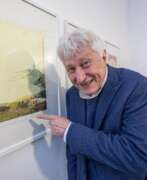

Dieter Huthmacher, born in 1947 in Pforzheim, Germany, is a renowned artist celebrated for his contributions to the world of fine art. His creative journey is marked by a diverse array of print graphics, where he skillfully blends color and form to create captivating works. Huthmacher's art is not only a reflection of his mastery in various techniques but also a testament to his deep understanding of artistic expression.
Throughout his career, Huthmacher has explored different themes and motifs, often experimenting with large formats and various color techniques. His works, primarily consisting of prints, have been featured in several auctions, indicating the consistent interest and value placed on his art in the collectors' market. Notable pieces like "Thalia," created around 1988, showcase his proficiency in color woodcut techniques and are representative of his artistic signature.
Dieter Huthmacher's works continue to be sought after, with auctions featuring over 25 graphic prints of various motifs, demonstrating his versatility and appeal in the art world. His creations have been presented in prestigious auction houses, resonating with collectors, auctioneers, and art enthusiasts alike.
For those interested in the world of art and antiques, particularly in the works of Dieter Huthmacher, staying informed about upcoming auctions and sales can be incredibly beneficial. By signing up for updates, you can receive timely information about new product sales and auction events related to Dieter Huthmacher's art, ensuring you never miss an opportunity to acquire a piece of his esteemed collection.
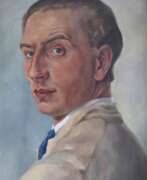

Wilhelm Imkamp was a German painter and a student of the Bauhaus and is one of the most important abstract painters of the post-war period in Germany.
Even though Imkamp made over 500 portraits in his lifetime and thus secured his income for several years of his life, abstract painting is and remains the core of his work. His paintings were created without sketches and preliminary studies, he always painted several pictures at the same time and let a composition emerge in many individual steps from the interaction of colour and form alone. Impressions from nature and music were his sources of inspiration, which played a part in the creative process, but in the end a completely new world of images emerged, on the basis of which the picture titles were also found. Imkamp's work is clearly recognisable as a Bauhaus student, strongly influenced by Wassily Kandinsky's colour compositions, Paul Klee's narrative span and Lyonel Feiniger's structured use of space. Over the years, however, he developed a very independent artistic position among the students of the Bauhaus.
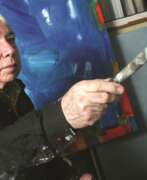

Jaime Isidoro is a Portuguese artist. Studied drawing and painting at Escola Soares dos Reis, Porto. For the first time he exhibited individually in 1945 (Porto). Parallel to his career as an artist, he has engaged in a wide range of activities as a cultural animator, gallery owner and teacher associated with important visual arts moments in the city of Porto and in the country. Since the urban landscape, especially the city of Porto, was the subject of many of his works, he initially created figurative works with sensitive formal simplifications, later developing into abstraction. His career as an artist has been marked by two distinct periods that define different phases: the first occurred in the mid-1940s and mid-1950s, while the second developed from the second half of the 1980s.
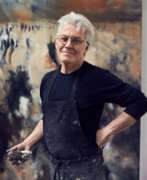



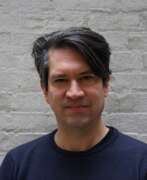

Sean Landers is an American artist. He is best known for using his personal experience as public subject matter and for utilizing diverse styles and media in a performative manner, and is especially known for his word art. His work encompasses many media: painting, sculpture, photography, drawing, writing, video and audio, and he uses humor and confession, gravity and pathos in it, blurring the lines between fact and fiction, reality and fantasy, sincerity and insincerity.
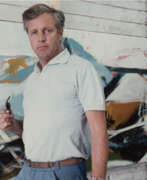

George Peter Lanyon was a British painter of landscapes leaning heavily towards abstraction. Lanyon was one of the most important artists to emerge in post-war Britain. Despite his early death at the age of forty-six he achieved a body of work that is amongst the most original and important reappraisals of modernism in painting to be found anywhere. Combining abstract values with radical ideas about landscape and the figure, Lanyon navigated a course from Constructivism through Abstract Expressionism to a style close to Pop. He also made constructions, pottery and collage.




James Williamson Galloway Macdonald, commonly known in his professional life as Jock Macdonald, was a Canadian artist and art educator, a member of Painters Eleven, an organisation whose purpose was to promote abstract art in Canada.
Jock Macdonald was instrumental in the development of the contemporary art movement in the country.


Helmuth Macke was a German painter of the first half of the twentieth century. He is known as a painter and graphic artist, landscape painter, genre painter and portraitist.
Helmuth Macke is considered a representative of Rhenish Expressionism. His work merged influences of constructivism, abstractionism and other artistic movements. At the end of his career he created the "Blue Room" for the industrialist Karl Gröppel in Krefeld; it was discovered after decades of neglect in 2012 and now adorns the Krefeld Villa Goecke after restoration.
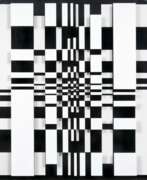

Max Herrmann Mahlmann was a German Constructivist painter. Mahlmann studied from 1934 to 1938 as a student of Richard Müller at the Academy of Fine Arts in Dresden and initially also worked as a stage painter and commercial artist. Mahlmann turned to non-representational painting after 1945, heavily influenced by Wassili Kandinsky and Josef Albers, and concentrated on geometric-constructivist compositions.
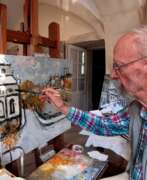

Charles Malle, born Charles Gleize, is a French artist. Mallet's work is varied and includes works of various styles and techniques, from impressionist cityscapes to abstract and minimalist works.
Mallet studied at the École des Beaux-Arts in Paris in the 1950s. Mallet's early work was figurative and representational, painting cityscapes in the Impressionist style. However, he later moved away from this style and became associated with the Support/Surface movement in France, which sought to question the nature of painting and sculpture through abstraction and deconstruction of form.
Mallet's later work from the 1970s onwards is characterised by geometric forms, bold colours and flat surfaces. He often worked in series, exploring variations on a particular theme or concept. He also created sculptures and installations using materials such as metal, wood and fabric.
Mallet's work has been exhibited in galleries and museums around the world, including the Centre Pompidou in Paris, the Museum of Modern Art in New York and the Stedelijk Museum in Amsterdam. He has also been the subject of several retrospectives, including one at the Museum of Modern and Contemporary Art in Nice in 2009.
Mallet continues to work and exhibit his art today, and is considered one of the leading figures of the contemporary French art scene.
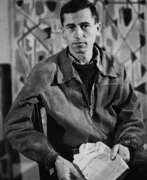

Alfred Manessier was a French painter and graphic artist, a representative of the New Paris School and the Salon de May.
He was educated at the Ecole Nationale Supérieure des Beaux-Arts in Paris and was fascinated by Cubism, Surrealism, Fauvism, like many artists of that generation. But at the same time he studied with the old masters and with the coryphaei of Impressionism. In the middle of his life, Manassier reconsidered his views and turned to religious subjects and landscapes with sea views. He became involved in stained glass and tapestry art.

Conrad Marca-Relli was an American artist who belonged to the early generation of New York School Abstract Expressionist artists whose artistic innovation by the 1950s had been recognized across the Atlantic, including Paris. New York School Abstract Expressionism, represented by Jackson Pollock, Willem de Kooning, Franz Kline, Robert Motherwell, Marca-Relli and others became a leading art movement of the postwar era.
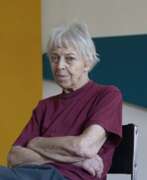

Dóra Maurer is a Hungarian visual artist whose work has spanned a 50-year career. She works in almost every medium, from film and photography, to painting, performance, and sculpture. Principally achieving recognition in the 1970s with avant-garde work, Maurer has developed her art career from works with contemporary and modern influences that have been shown worldwide. Her art is based on mathematical and complex system processes. Most of Maurer's work follows the theme of showing options to the viewer and what the viewer can do with those options. Many of her works break down simple actions so the viewer can really view the piece as movement, not a photograph of movement. Dóra Maurer has in addition been a professor at the Faculty of Fine Arts in Budapest and a curator.
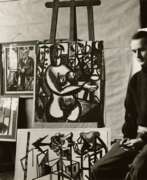

Hermann Naumann, a distinguished German artist, has made significant contributions to the fields of painting, graphics, illustration, and sculpture. Starting his artistic journey with a stonemasonry apprenticeship, Hermann Naumann later honed his skills in sculpture under the guidance of Burkhart Ebe and Herbert Volwahsen at the HBK Dresden. Over time, he expanded his artistic repertoire to include painting and graphic arts, embracing techniques like lithography, etching, and punch cutting.
Hermann Naumann's works are celebrated for their depth and versatility, reflecting his mastery over various mediums. Notably, his illustrations for literary works, such as Heinrich Böll's "Erzählungen" and Franz Kafka's "Betrachtung," showcase his exceptional ability to complement and elevate textual narratives through visual art. His public sculptures, like the relief in Dresden and the "Fahnenschwinger" in Riesa, further attest to his prowess in creating engaging and meaningful art.
For art collectors and enthusiasts, Hermann Naumann's oeuvre offers a rich tapestry of visual narratives, each piece echoing the artist's profound engagement with his subjects and mediums. Those interested in exploring Hermann Naumann's artistic journey and his contributions to German art and culture are encouraged to stay updated on exhibitions, sales, and auctions featuring his work.
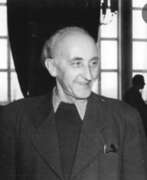

Oskar Nerlinger, born on March 23, 1893, in Straubenhardt, Germany, was a notable German painter whose career spanned the early to mid-20th century. His work was part of the painting event in the art competition at the 1932 Summer Olympics, highlighting his recognition in both the art and sports communities. He also worked under the pseudonym Nilgreen.
Nerlinger's art primarily focused on painting, and he became known for his unique style and contributions to the art world during a time of significant cultural and political change in Germany. His artworks reflected the trends and movements of his era, capturing the essence of the period in which he lived and worked.
While specific details about Nerlinger's most famous works or their presence in museums and galleries are not readily available, his participation in the 1932 Summer Olympics art competition suggests that his work received considerable recognition. This would be of particular interest to collectors, auctioneers, and experts in art and antiques, especially those with a focus on early 20th-century German art.
For those interested in exploring more about Oskar Nerlinger's life, work, and impact on the art world, further research and exploration into art history sources and museum collections that feature German art from this period would be beneficial.
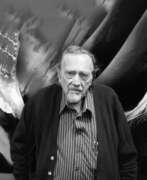

Leonardo Nierman, full name Leonardo Nierman Mendelejis, is a Mexican artist known mainly for his paintings and sculptures. His work is abstract yet still contains visible images of nature such as birds, water, lightning and more. His paintings are in pure colours, while his sculptures are usually in metal, often with a silver hue.
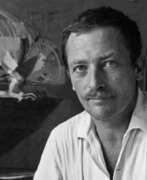

Alejandro Jesús Obregón Rosės was a Colombian painter, muralist, sculptor and engraver.
Obregón is a good example of the abstract Surrealist trend in Latin America.
Color plays a fundamental role in integrating the structures of his design, using geometric forms and expressionism.


Wolfgang Robert Paalen was an Austrian-Mexican painter, sculptor, and art philosopher. A member of the Abstraction-Création group from 1934 to 1935, he joined the influential Surrealist movement in 1935 and was one of its prominent exponents until 1942. Whilst in exile in Mexico, he founded his own counter-surrealist art-magazine DYN, in which he summarized his critical attitude towards radical subjectivism and Freudo-Marxism in Surrealism with his philosophy of contingency. He rejoined the group between 1951 and 1954, during his sojourn in Paris.
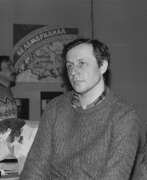

Alexander Borisovich Popov (Russian: Александр Борисович Попов) was a Soviet and Russian artist of the last quarter of the twentieth and early twenty-first centuries. He is known as a painter and graphic artist who performed under various pseudonyms.
Alexander Popov was a member of the Moscow Union of Artists and worked in the genres of still life, landscape and abstraction. The master's creativity at different times developed in the styles of realism, abstractionism and pop art. His first solo exhibition took place in 1974, where about seventeen works were presented.
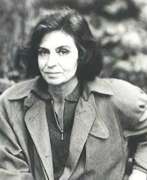

Maria Inês Ribeiro da Fonseca, also known by her pen name Menez, is a Portuguese artist who played a pioneering role in the development of abstract art in her country.
In her earliest works, Menez demonstrated a poetic sensibility that clearly reflected the influence of the famous Paris School, and adopted a distinctive form of lyrical abstraction that had a great influence on the artistic era. In the late 1950s, the artist skilfully transformed the ambiguity between figuration and abstraction in her vivid chromatic atmospheres, delving into a Neo-Impressionist perspective that skilfully suggested inner space.
In the 1980s, Menezes, in her deeply individual manner, gracefully overcame the paradigm shift that led to the revival of figurative painting, firmly establishing her unique artistic language to which she remained faithful to the end.
